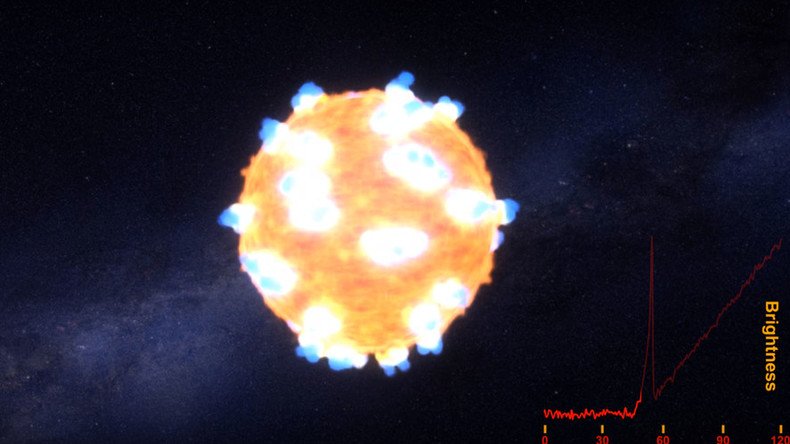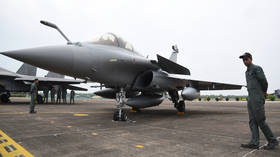Champagne Supernova: Gigantic exploding star finally captured in the act (VIDEO)

NASA has released mesmeric animated footage of shockwaves from the explosion of a red supergiant star.
Images of the “shock breakout”, as it’s known, are based on data collected by the Kepler space telescope which in 2011 captured images of a mega star combusting.
Kepler catches for the first time the early flash - a shock breakout - of an exploding starhttps://t.co/JI0PD1vyOFpic.twitter.com/qRPKmHGpyD
— NASA Kepler and K2 (@NASAKepler) March 21, 2016
The star identified as KSN 2011a is almost 300 times the size of our sun and 700 million light years from Earth while star KSN 2011d is 500 times bigger than the sun and well over a 1 billion light years away.
READ MORE: NASA displays sun’s ‘invisible’ magnetic fields in amazing detail (PHOTO)
The bigger of these two monsters dominates the enhanced footage, as detailed views of the smaller star’s explosion were apparently obscured by gas.
Astrophysics professor at the University of Notre Dame, Peter Garnavich, and his team of scientists have certainly been putting in some hard graft in the hopes of finding something so spectacular.
READ MORE: Space Odyssey: Tim Peake’s most spellbinding pictures from the ISS so far (PHOTOS)
They analyzed light captured by Kepler every 30 minutes over a three-year period from 500 galaxies and 50 trillion stars.
“To see something that happens on timescales of minutes, like a shock breakout, you want to have a camera continuously monitoring the sky,” said Garnavich. “You don’t know when a supernova is going to go off, and Kepler's vigilance allowed us to be a witness as the explosion began.”
Garnavich’s research team, Kepler Extragalactic Survey or KEGS is almost finished compiling data from Kepler’s primary mission which looked for supernovae - the death explosions of stars.
The Kepler mission ended prematurely in 2013 following a technical failure, but NASA's K2 mission is now searching even more galaxies for supernova events.













